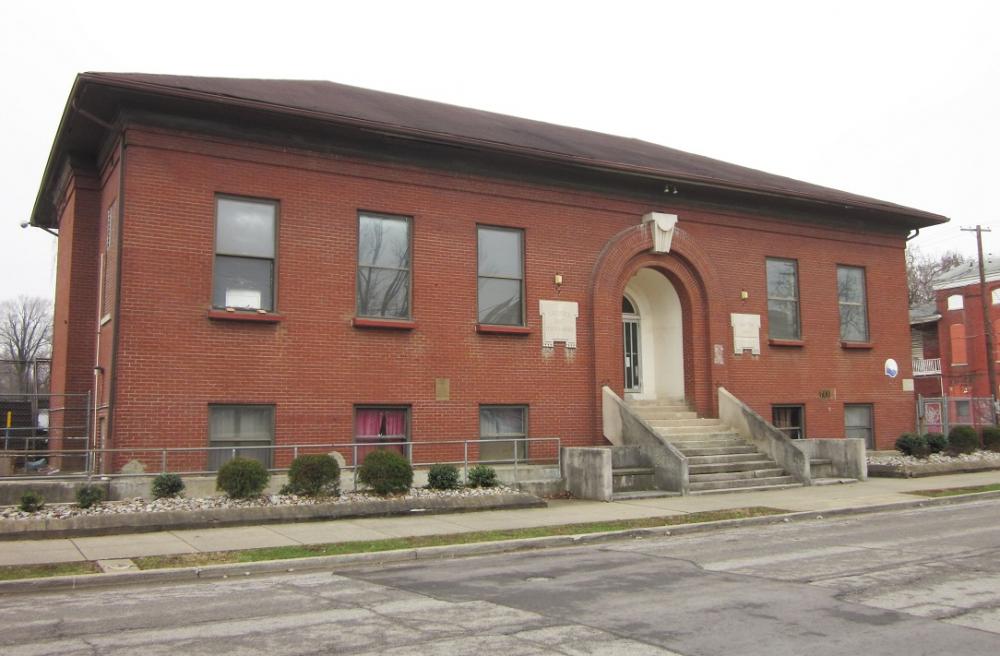The Eastern Colored Branch was a segregated public library located at 600 Lampton Street in Louisville, Kentucky. Opened in 1914, it was the second of the city’s “colored” libraries and served Louisville’s east end. The Western Colored Branch, which opened in 1905, was the first free public library in the United States for African Americans. Both branches were among the twelve segregated public libraries funded by Andrew Carnegie’s library program of the early century. The Eastern Branch closed in 1975.
The force behind the Western and Eastern Colored Branches was Albert E. Meyzeek (1862-1963), an African American educator who in 1902 protested the Louisville Free Public Library’s exclusion of African Americans from its libraries. The library board, which had obtained $450,000 from Andrew Carnegie for a main library and eight branches, agreed in 1905 to open the Western Colored Branch in Louisville’s predominantly middle-class Russell neighborhood. Reopened in 1908 in a Carnegie building on South 10th Street, the Western Colored Branch offered collections for adults and children as well as books by white and black writers. It also hosted many clubs, held popular story-telling contests for youth, and provided public meeting space in its basement. Impressed with the Western Colored Branch’s success, Meyzeek and Reverend C.C. Bates began lobbying for a branch in the east end. The Eastern Colored Branch opened on January 28, 1914, making Louisville the only city in the United States at the time with two segregated libraries for African Americans. The Eastern Colored Branch was also the eighth and last library Louisville built with its Carnegie funds.
Like its west end counterpart, the Eastern Colored Branch operated under the Louisville Free Public Library’s board and was supervised by Thomas Fountain Blue. However, the Eastern Colored Branch served a considerably poorer neighborhood. It also housed considerably fewer books, at least in its early years. And despite its nearly identical size, the $19,000 Eastern Colored Branch building had cost substantially less than the $35,000 Western Branch. Still, the Eastern Branch was an instant success, serving over 14,000 of Louisville’s east end residents in its first seven months of service.
Over their decades of service, both “colored” branches became important educational support and community social centers for Louisville’s African Americans. They also served as models for other segregated libraries in the south. Behind much of their success was their head librarian, Thomas Fountain Blue, and the Western Colored Branch’s original children’s librarian, Rachel D. Harris, now both considered African American pioneers of librarianship. When Blue became head of the Louisville Free Public Library’s Colored Department in 1920, Harris relocated to the Eastern Colored Branch to serve as its Senior Assistant.
Listed on the National Register of Historic Places, the Western Colored Branch operates today as the Western Library, an integrated branch of the Louisville Free Public Library system. The Eastern Branch, however, closed on December 31, 1975. Its former building remains on the corner of Hancock and Lampton streets.

